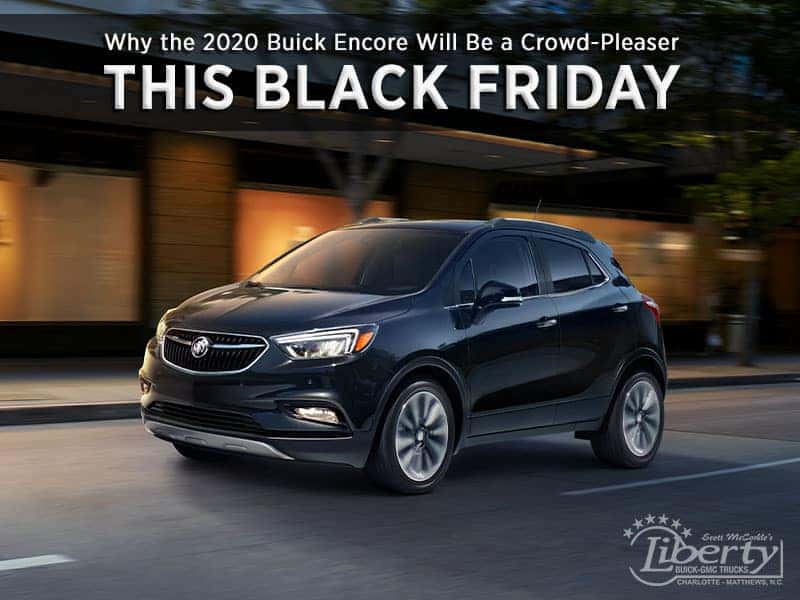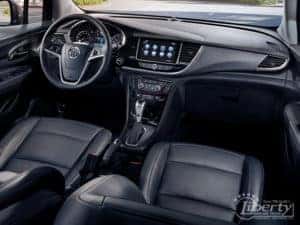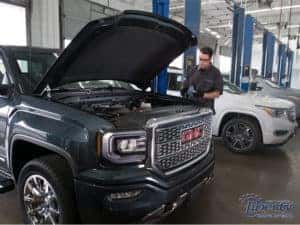The day after Thanksgiving is well known for attracting droves of American shoppers to retail stores. Considered to be the kickoff to the holiday season, Black Friday now spans over virtually all sectors of retail, and you can find deals on anything from electronics and toys to musical instruments and clothing. And with the prominence of online shopping, a single-day event has gradually turned into an entire weekend of sales that extend well into Cyber Monday.
However, retail isn’t the only industry that participates in Black Friday. Did you know that a significant number of shoppers look elsewhere for their deals in late November? Over the last decade or so, these heightened shopping trends have spilled over into the automotive market, with dealerships everywhere offering steep discounts on much—if not all—of their models.
This competition among manufacturers and dealerships creates a great opportunity for people who are in the market for a new vehicle. In fact, you can find some of the best car deals of the year throughout most of November.
Here at Liberty Buick GMC, we’re not holding back on the discounts and incentives this November. We’ve got deals going for tons of brand-new models, and we would love for you to come by and see for yourself. Actually, we’ve got one of the most cost-effective vehicles on the market in stock—
the 2020 GMC Terrain. And with additional discounts available, you would be hard-pressed to find another vehicle that offers you this kind of bang for your buck.
What makes the 2020 GMC Terrain so cost-effective? We’ll discuss that here, along with many other characteristics of the one-of-a-kind SUV:
Overview of the 2020 GMC Terrain
The 2020 GMC Terrain is in a crowded class of compact SUVs. Competition is fierce from popular models like the Honda CR-V, Mazda CX-5, Volkswagen Tiguan, and Toyota RAV4; yet, the Terrain holds its own and offers buyers several characteristics not found in other vehicles.
Some describe it as a more upscale version of its sibling—the Chevrolet Equinox. But the Terrain is more than that; it’s an SUV that sets itself apart from the rest of the class with everything from its standard safety features to its attractive design to its tech options. Oh, and its fuel efficiency, among other things, makes it one of the most cost-effective vehicles you can buy today.
The Terrain still comes in four different trims (SL, SLE, SLT, and Denali), but GMC has made some notable changes to the vehicle for 2020. Along with tweaking a few features here and there, the all-wheel-drive models are no longer available with a diesel engine. However, buyers can still opt for a diesel engine on the front-wheel-drive versions of the SLE and SLT trims. Most appealing, perhaps, are the changes to its standard safety features. In recent years, features such as automatic high-beam lights, automatic emergency braking, forward-collision alert, and lane-keep assistance were optional; now, they come stock.
Let’s get into some of the details of what makes the 2020 GMC Terrain so special:
A Distinct Exterior
The Terrain is a great-looking vehicle. As far as shape and size go, it does share some similarities with the Equinox. However, the Terrain has a distinct design that won’t be mistaken for any other vehicle. It looks refined and unquestionably luxurious with a graceful blend of sharp and rounded character lines, C-shape LED lighting, and squared-off grille. Its overall appearance is attention-getting yet easy to the palate.
There are nine colors available for the 2020 Terrain:
- Smokey Quartz Metallic
- Graphite Gray Metallic
- Ebony Twilight Metallic
- Red Quartz Tintcoat
- Summit White
- Satin Steel Metallic
- Blue Emerald Metallic
- Quicksilver Metallic
- White Frost Tricoat
Buyers who are looking for a more aggressive exterior should consider the Elevation Edition, which is available with the Graphite Gray Metallic, Ebony Twilight Metallic, Summit White, and Satin Steel Metallic colors. The Elevation Edition Terrain features a darkened grille, black roof rails and mirror caps, black exterior accents and trim badging, and 19” gloss-black aluminum wheels.
A Handsome and Functional Interior
Like other GMC models, the 2020 Terrain has got it going on in the interior. It comfortably seats five (with impressive legroom in the back row), and there’s ample space for cargo; actually, it’s among the top of the class in terms of cargo space. Much of this is due to 60/40 split-folding rear seats and an optional fold-flat front seat. With the back seats up, there are 29.6 cubic feet of cargo space behind the back row, and that space grows to 63.3 cubic feet when you fold down the back seats. Fold down the front passenger seat, and you can fit objects as long as eight feet in the vehicle.
The interior of the 2020 Terrain also looks really good. The cabin is nothing less than what you would expect from a luxury vehicle, with high-quality design and materials throughout, especially in the SLT and Denali trims. All trims come standard with aluminum trim and a leather-wrapped steering wheel.
Whether you opt for cloth or leather upholstery, the seat cushioning is sufficient, and you can increase comfort with features like advanced heated seats (which allow you to heat both the bottom and back cushion or only the bottom cushion) and power-adjustable seats.
Lots of Standard Safety Features
Though the 2020 Terrain comes wrapped in arresting style, one of its most impressive characteristics is how safe it is. It’s arguably as safe as any compact SUV on the market, and GMC added tons of standard safety features to the Terrain in 2020. General Motors calls the new package of active safety technology “Pro Safety,” and it comes on all four trims of the Terrain.
The Pro Safety suite includes automatic high-beam lights (IntelliBeam headlamps), automatic emergency braking, forward-collision alert, lane-keep assistance, lane departure warning, following distance indicator, and front pedestrian braking.
There are also plenty of other safety features buyers can add by opting for the Driver Alert package. These features include:
Lane Change Alert with Side Blind Zone Alert
The main purpose of this feature is to help you prevent side-swiping and other types of accidents. Whenever you’re about to change lanes—or are in the midst of changing lanes—lights on your side mirrors alert you if there’s a vehicle in or quickly approaching your blind spot.
Rear Cross-Traffic Alert
This comes into play when you are reversing your vehicle, especially in parking lots. If there’s a vehicle approaching your vicinity (left or right), you will see an indicator symbol on your rear vision camera screen. Rear cross-traffic is detected through radar sensors on the back of the Terrain.
Adaptive Cruise Control
This technology uses cameras to automatically adapt your vehicle’s cruise control speed to keep a safe distance between you and the vehicles ahead of you. In short, it makes cruise control even safer and more convenient.
Front and Rear Park Assist
This feature also uses radar sensors to help drivers in parking lots. When you’re driving at low speeds and trying to park, the feature will give you distance alerts to nearby vehicles and objects so that you can safely park.
Safety Alert Seat
The Safety Alert Seat is one of the cooler safety features offered on the 2020 Terrain. In essence, it allows you to replace crash avoidance beeps with vibration pulses on the bottom of the driver’s seat.
Teen Driver System
This feature was created to help teenage drivers develop safe driving habits. When it’s set up, you can activate Teen Driver mode with your key fob. So, if you have a teen driver in your family, the vehicle will provide advice and feedback throughout the driving experience, and it will even produce a report card. Furthermore, you can control which vehicle features are available and which cannot be turned off during Teen Driver mode.
It’s also worth noting the conventional safety features that buyers will find on the new Terrain:
- Driver, Passenger, Front Head, Rear Head, and Front Side Airbags
- Electronic Stability Control
- Traction Control
- Anti-Lock Brake System
- Daytime Running Lights
Top-Notch Crash Test Results
The safety doesn't end with the features when it comes to the 2020 GMC Terrain, as it received top marks for almost every category. The National Highway Traffic Safety Administration (NHTSA) gave it a five-star overall rating (out of five), as well as five stars in the front and side crash tests. Its only imperfect score was four stars in the rollover test, but it was evaluated to have only an 18.5% rollover risk.
The Insurance Institute for Highway Safety (IIHS) has yet to evaluate the 2020 Terrain, but the 2019 model was given a “Good” (the highest rating) in all tests administered.
Great Fuel Efficiency
One of the main reasons why the 2020 GMC Terrain is such a cost-effective vehicle is that it gets great gas mileage. Buyers have a choice between two four-cylinder engines: a 1.5-liter good for 170 hp and 203 lb-ft of torque, and a 2.0-liter that produces 252 hp and 260 lb-ft of torque. Both of the engines are turbocharged and matched with a nine-speed automatic transmission.
The 1.5-liter engine provides 30 MPG highway, 26 MPG city, and 28 MPG combined, while the 2.0-liter gives you 28 MPG highway, 22 MPG city, and 24 MPG combined.
Trims and Prices
As previously mentioned, the 2020 GMC Terrain is available in four trim levels: SL, SLE, SLT, and Denali. Let’s discuss some of the main features and prices involved with each one:
The SL
The SL is the Terrain’s base model, and it starts at $25,000 MSRP. For a base model, the Terrain SL comes with a lot of features. Safety-wise, it includes front pedestrian braking, forward-collision warning, and automatic emergency braking, all of which are new to this year’s model. It comes with many other safety features as well, such as a rear-view camera system, automatic high-beams, lane-keep assistance, lane departure warning, following distance indicator, and GMC’s Teen Driver system.
Technology-wise, the Terrain SL includes a six-speaker audio system, 7” touchscreen, Apple CarPlay and Android Auto, Bluetooth connectivity, WiFi hotspot, four USB ports, proximity keyless entry, and push-button start. Oh, and it throws in a leather-wrapped steering wheel for good measure.
The SLE
Going up to the Terrain SLE, the price starts at $28,400. There aren’t a lot of added standard features. However, this is where the buyers are eligible for a slew of upgrade packages, including upgrades to styling, seating, the infotainment system, and safety.
The SLT
The SLT comes in at $31,200 and has several notable standard features. First of all, leather seats and remote start come stock. Also standard is dual-zone automatic climate control, power-adjustable driver’s seat, and heated front seats. Buyers of the SLT will also get a bigger touchscreen, along with other infotainment upgrades, and satellite radio capability.
The Denali
Like other GMC models, the Denali is the most luxurious trim of the Terrain. Starting at $38,300, this trim comes stock with the 2.0-liter turbocharged engine, a heated steering wheel, powered front seats (both), and a hands-free liftgate.
This is also the trim that provides the most safety features, with additions like lane change alert with side blind zone alert, front and rear park assist, rear cross-traffic alert, and safety alert seat. Moreover, buyers of the Terrain Denali will get a seven-speaker Bose audio system, HD radio, and navigation.
If you’re looking for a great all-around SUV that makes sense economically, look no further than the 2020 GMC Terrain. And be sure to come by
Liberty Buick GMC during our Black Friday sales event. We guarantee we’ll have the best deals you can find on all-new GMC models. We look forward to seeing you!


































 You’re basically borrowing the car, and whatever value the car depreciates while you drive it is what you pay each month (in addition to finance charges).
You’re basically borrowing the car, and whatever value the car depreciates while you drive it is what you pay each month (in addition to finance charges).

















